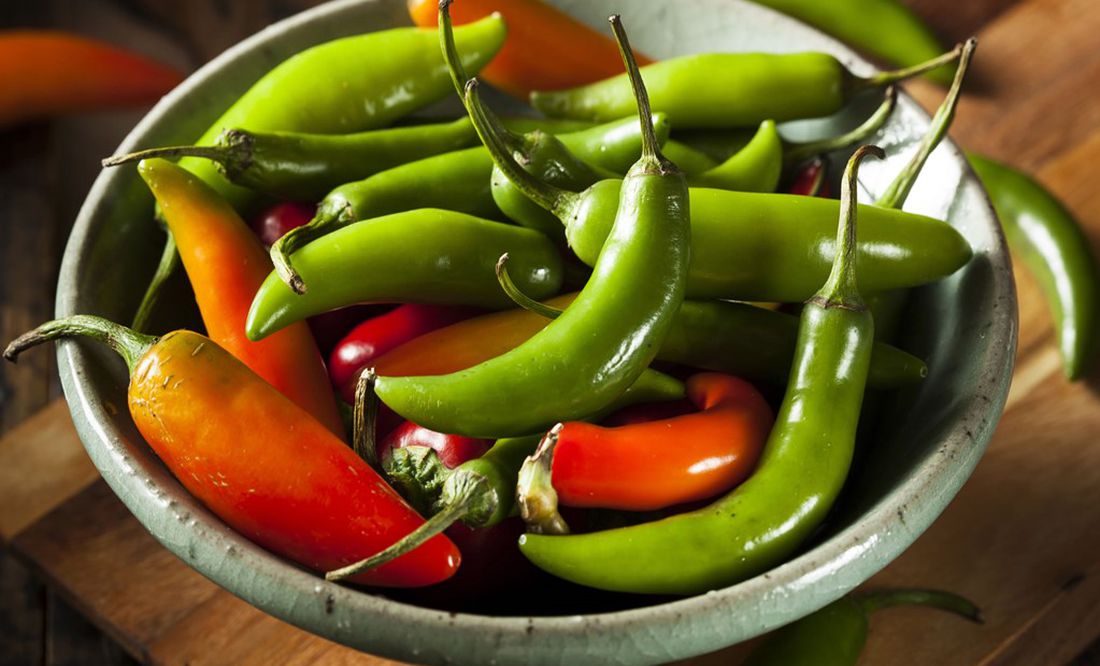Mexico
is considered as the place of origin and domestication of chilies , a fruit that is an essential part of Mexican culture and cuisine .
Chilies can perhaps be a starting point for Mexican nationalism . For example, these delicious and spicy fruits are mentioned in the Popol Vuh , written by the Mayans and in the Florentine Codex: General history of the things of New Spain , written by Bernardino de Sahagún . In these texts, it is explored how chilies have an essential role in the cosmology , rituals , and offerings set up by Indigenous communities .
Chronicler Fray Bartolomé de las Casas said that “without chilies [Mexicans] don't believe they are eating,” nevertheless, this assertion prevails since Mexican cuisine depends on chilies , for example, pozole , mole , adobo, tacos , and tamales wouldn't be the same without this key ingredient.
A domesticated fruit
All chilies belong to the Capsicum genre , which is native to the tropical and subtropical regions of the American continent . There are five chili species that have been domesticated: Capsicum annuum , Capsicum chinense , Capsicum baccatum , Capsicum frutescens , and Capsicum pubescens .
Capsicum annuum
originated in Mesoamerica , has been cultivated for over 10,000 years, and quite relevant for Mexico in regards to culture , agriculture , nutrition , and economy . According to researcher Araceli Aguilar, Mexico is considered the center of origin and domestication of the Capsicum annuum, which has over 100 varieties, including chile piquín and chile poblano .

Some of the most used chilies in Mexico are habanero , jalapeño , chipotle , serrano , pasilla , güero , among many others.
Mexican scientists obtain patent for Kisín, very spicy habanero
Why are chilies spicy?
What people love the most about chilies are its delicious but spicy taste, which comes from the seeds inside them since there is where the capsaicinoids are produced. The capsaicinoids are chemical substances that give chilies its pungency , that means, the burning sensation produced by chili , commonly called spiciness .
The pungency of the majority of chilies is produced by two capsaicinoids: capsaicin and dihydrocapsaicin as they provide between 80% and 90% of spiciness.
However, there are chilies that are slightly or not spicy at all, such as bell peppe r, which has 0 Scoville units and others that are very spicy, such as the Carolina Reaper chili , which has 2 million Scoville units.
Pain or pleasure?
When you taste a chilli , the sensation produced by the capsaicinoids is not registered by the taste buds , but rather by the pain receptors all over the body, including the mouth. These pain receptors send a message to the brain , alerting that something is burning and hurts and in order to calm the spiciness, the body starts to sweat and produces endorphins to suppress the pain; this is why people enjoy spicy food .
Moreover, did you know chilies also have health benefits ? Chilies actually have more vitamin C than oranges and more vitamin A than carrots. According to botanist Eva Aguirre and chemist Verónica Muñoz, this spicy fruit also stimulates the saliva and gastric juices flow, which leads to a better digestion of the proteins found in corn and beans .
Moreover, it is quite interesting that chilies are the only living beings that produce capsaicinoids and that they are also used by the pharmaceutical , war , and beauty industries.
gm


/cloudfront-us-east-1.images.arcpublishing.com/eluniversal/LJSAF4XGGZE5JCJ6QEDCYFAZ3I.jpg)
/cloudfront-us-east-1.images.arcpublishing.com/eluniversal/3TCDKGJNH5HJFLWMA45KT5N7R4.jpg)
/cloudfront-us-east-1.images.arcpublishing.com/eluniversal/UG4AEWKHOVBTDCTIOXSZN7SGXU.jpg)

/cloudfront-us-east-1.images.arcpublishing.com/eluniversal/G3FGPEL47BD3RLLXAKS7XWVVJ4.jpg)
